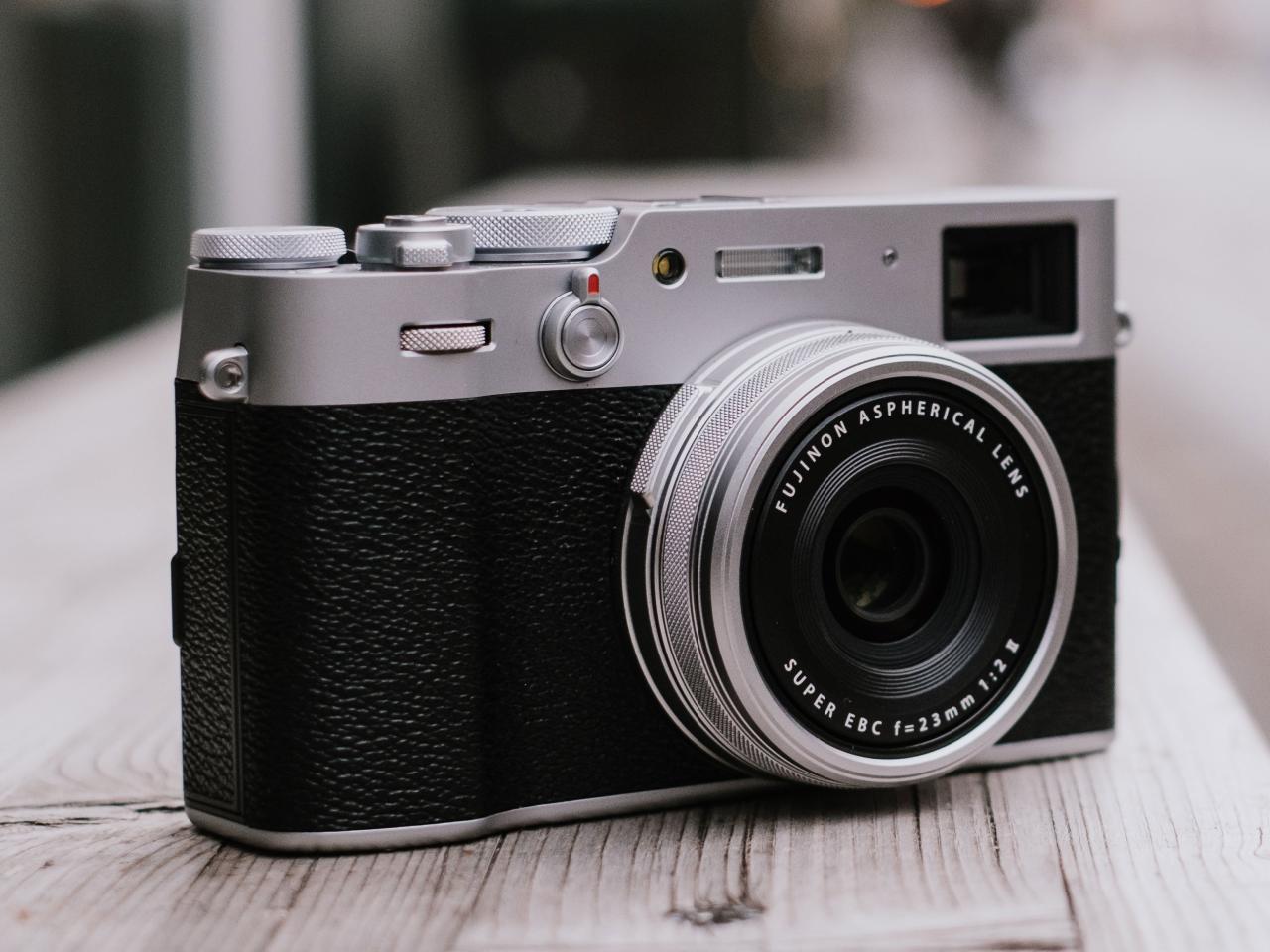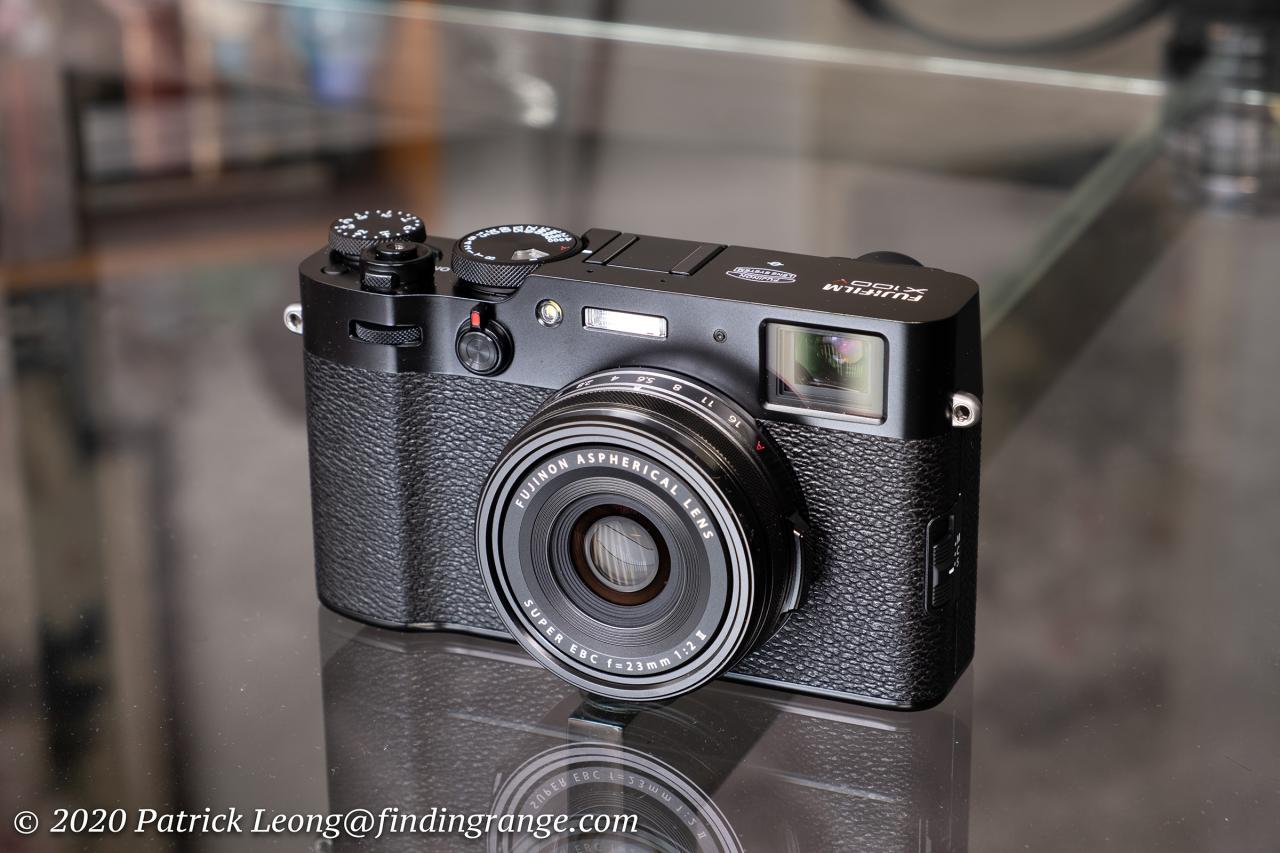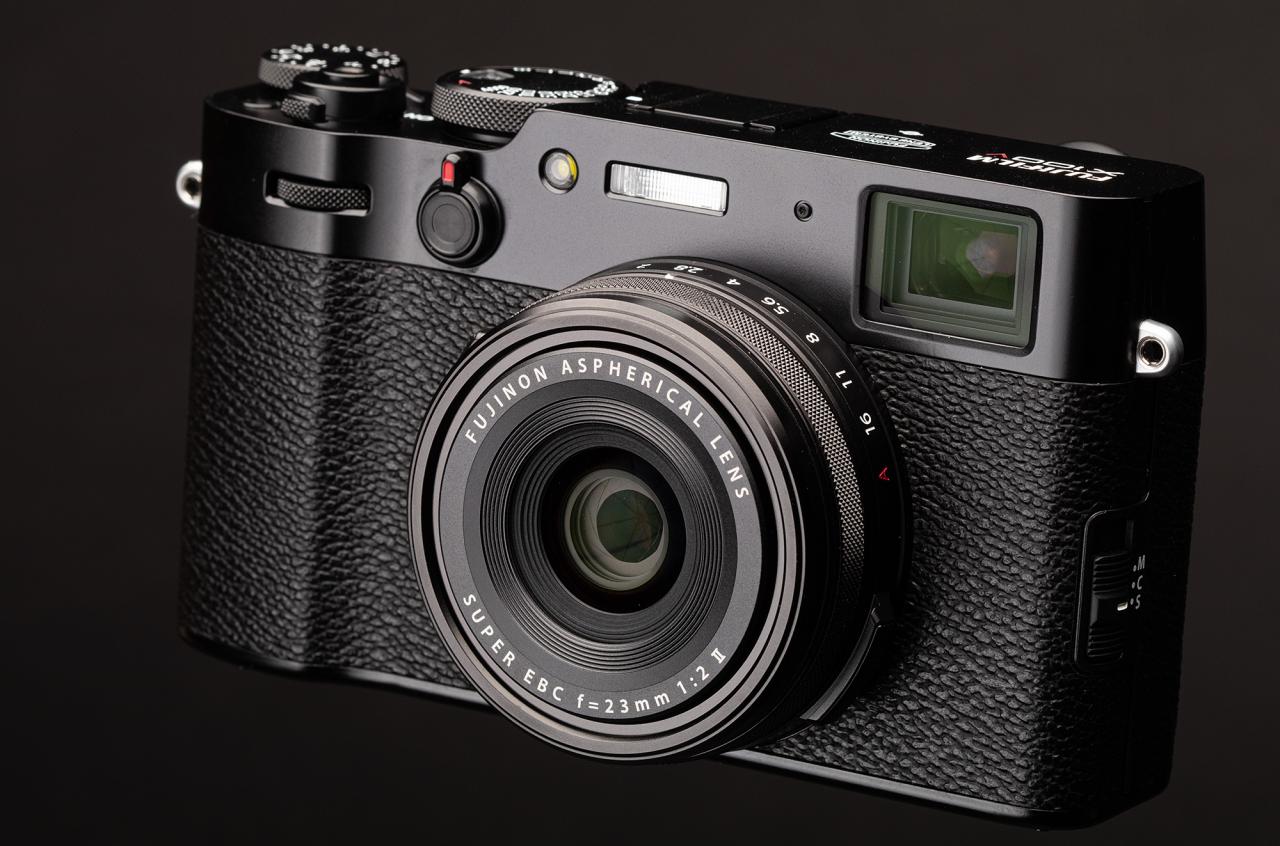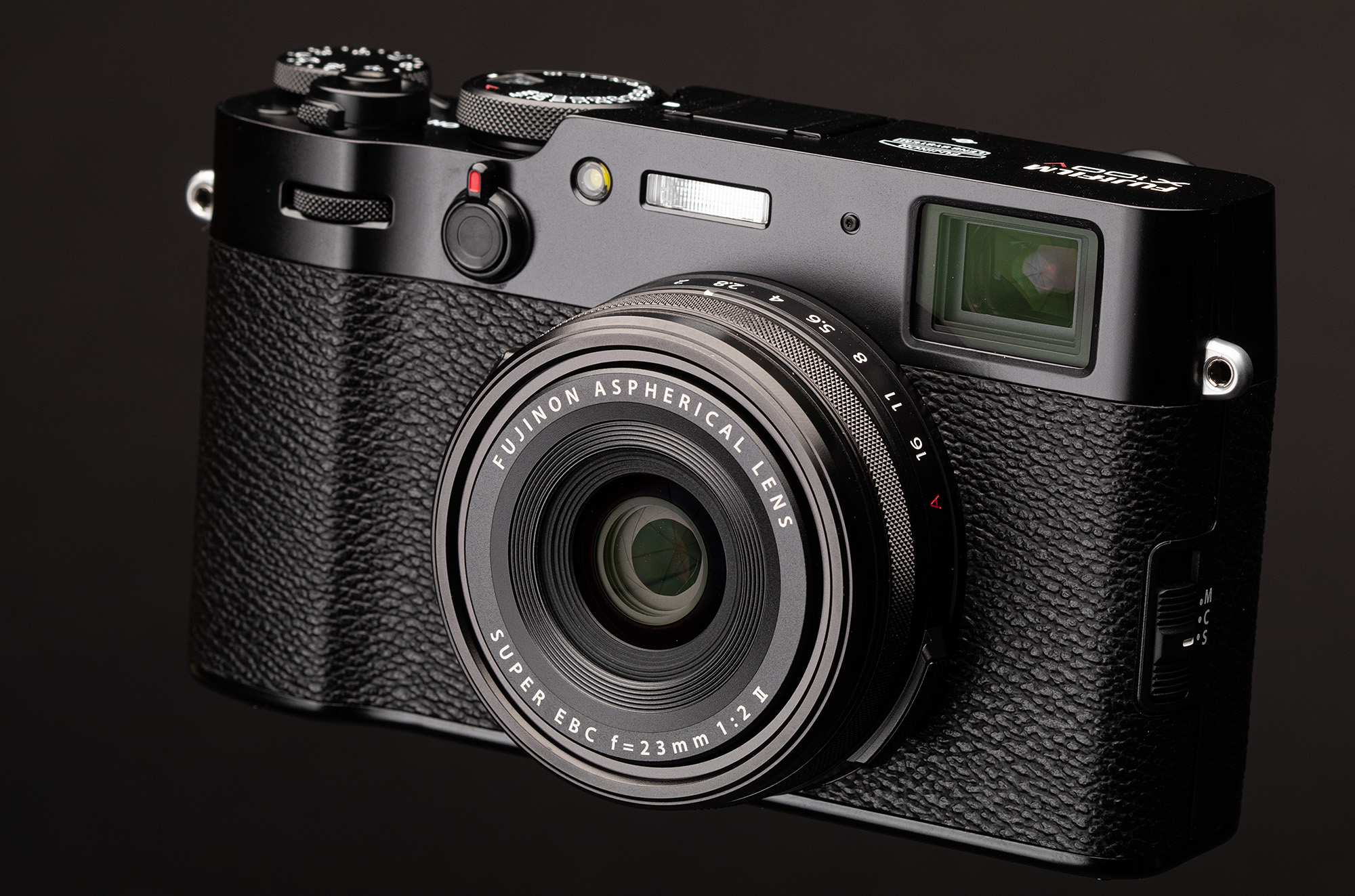The Fujifilm X100V stands as a testament to the enduring appeal of compact rangefinder-style cameras. Its retro design seamlessly blends with modern technology, offering a compelling package for photographers seeking both style and substance. This review delves into the X100V’s features, image quality, ergonomics, and video capabilities, comparing it to its predecessors and competitors to determine its place in the current market.
We’ll explore its strengths and weaknesses, offering a balanced perspective for potential buyers.
From its exceptional image quality stemming from its advanced sensor and Fujifilm’s renowned film simulations, to its intuitive handling and versatile 23mm f/2 lens, the X100V caters to a diverse range of photographic styles. We will examine its performance in various scenarios, exploring its capabilities in street photography, landscape, and portraiture, as well as its video recording potential.
Fujifilm X100V: A Deep Dive into its Features and Capabilities
The Fujifilm X100V, a compact powerhouse, continues the legacy of its predecessors while incorporating significant improvements. This detailed exploration delves into its specifications, image quality, user experience, lens capabilities, video performance, accessories, and a comparison with its competitors. We’ll examine what makes the X100V a compelling choice for photographers of various skill levels and styles.
Camera Features and Specifications, Fujifilm x100v

The X100V boasts a 26.1MP X-Trans CMOS 4 sensor, a significant upgrade from its predecessors. This sensor, combined with the X-Processor 4, delivers exceptional image quality and speed. The autofocus system, while generally reliable, can sometimes struggle in low-light conditions or with fast-moving subjects. Its image stabilization, while not in-body, is comparable to other cameras in its class utilizing lens-based stabilization, providing sufficient stability for most shooting scenarios.
| Feature | X100 | X100T | X100F | X100V |
|---|---|---|---|---|
| Sensor | 16.3MP APS-C X-Trans CMOS I | 16.3MP APS-C X-Trans CMOS II | 24.3MP APS-C X-Trans CMOS III | 26.1MP APS-C X-Trans CMOS 4 |
| Processor | EXR Processor II | EXR Processor II | X-Processor Pro | X-Processor 4 |
| Autofocus System | Contrast Detection | Contrast Detection | Hybrid (Phase Detection + Contrast Detection) | Hybrid (Phase Detection + Contrast Detection) |
| Image Stabilization | None | None | None | Lens-based |
Image Quality and Performance
The X100V’s renowned color science and film simulations are a major draw. The camera’s dynamic range is excellent, capturing details in both highlights and shadows. High ISO performance is also impressive, with minimal noise even at higher sensitivities. Compared to similarly priced cameras, the X100V consistently delivers exceptional image quality, particularly in its color reproduction and film simulation accuracy.
- The X100V excels in: street photography, landscape photography (with limitations due to the fixed lens), and portraiture (with creative cropping).
- The X100V might fall short in: sports photography (due to autofocus limitations), low-light situations (without additional lighting), and situations requiring significant zoom range.
User Experience and Ergonomics

The X100V features a refined and intuitive design. The physical controls are well-placed and responsive, providing a satisfying tactile experience. The menu system, while comprehensive, can feel slightly complex for beginners. Compared to other compact cameras, the X100V offers a more advanced and customizable shooting experience, though it requires a steeper learning curve.
- Pros: Compact size, excellent tactile controls, customizable settings.
- Cons: Steep learning curve for beginners, menu system could be more intuitive.
Lens and Photographic Capabilities
The X100V’s 23mm f/2 lens (35mm equivalent) is a versatile prime lens, well-suited for a wide range of photographic genres. Its sharpness is exceptional, and distortion is minimal. The lens produces pleasing bokeh, especially when shooting at wider apertures.
| Feature | Fujifilm 23mm f/2 | Competitor Lens 1 | Competitor Lens 2 |
|---|---|---|---|
| Focal Length | 23mm (35mm equivalent) | (Example: 35mm) | (Example: 28mm) |
| Aperture | f/2 | (Example: f/1.8) | (Example: f/2.8) |
| Image Stabilization | Lens-based | (Example: Yes/No) | (Example: Yes/No) |
| Autofocus | (Describe Autofocus System) | (Describe Autofocus System) | (Describe Autofocus System) |
Video Capabilities
The X100V records 4K video at up to 30fps and 1080p at up to 120fps. The video quality is generally good, with accurate colors and detail. Compared to some dedicated video cameras, the X100V’s video capabilities are a bit more limited, lacking features like internal slow-motion recording at higher resolutions. However, for casual video work or supplementing stills photography, it performs admirably.
For example, a hypothetical video shot of a bustling city street at night, using the X100V’s low-light capabilities, would produce footage with decent detail, though some noise might be present. The camera’s compact size would be advantageous for capturing candid moments, but its lack of advanced video features, such as robust audio recording capabilities, might limit its use for more professional video projects.
Accessories and Ecosystem
A range of accessories enhances the X100V’s functionality. Filters, such as ND filters, are commonly used to control light. External microphones improve audio quality for video recording. Third-party accessories are readily available, offering further customization options.
- Recommended Accessories for Street Photography: An ND filter for controlling light in bright conditions, a small carrying case.
- Recommended Accessories for Landscape Photography: A tripod for sharper images, a remote shutter release.
- Recommended Accessories for Videography: An external microphone for better audio quality.
Comparison with Competitors

The X100V competes with cameras like the Sony RX1R II, Ricoh GR III, and Leica Q2. While these cameras offer different strengths and weaknesses, the X100V distinguishes itself with its unique combination of image quality, compact size, and extensive manual controls.
| Feature | Fujifilm X100V | Sony RX1R II | Ricoh GR III | Leica Q2 |
|---|---|---|---|---|
| Sensor | 26.1MP APS-C X-Trans CMOS 4 | 42.4MP Full-Frame | 24.2MP APS-C | 47.3MP Full-Frame |
| Lens | 23mm f/2 | 35mm f/2 | 28mm f/2.8 | 28mm f/1.7 |
| Video | 4K/30p, 1080p/120p | 4K/30p | 4K/30p | 4K/30p |
| Price | (Insert Price) | (Insert Price) | (Insert Price) | (Insert Price) |
Illustrative Examples
A photograph taken with the X100V, depicting a quiet street scene at dusk, would showcase the camera’s excellent low-light performance and ability to capture subtle details in shadows. The warm tones rendered by the film simulation would enhance the mood, creating a nostalgic feel. The composition, focusing on leading lines converging towards a distant point, would draw the viewer’s eye.
A shallow depth of field, achieved using the lens’s wide maximum aperture, would further isolate the subject from the background.
Another photograph, a close-up portrait shot in bright sunlight, would highlight the lens’s sharpness and the camera’s ability to render skin tones accurately. The use of a fast shutter speed would freeze any movement, ensuring a sharp image. The careful positioning of the subject, utilizing natural light for illumination, would emphasize the artistic choices made by the photographer. The resulting image would showcase both the technical capabilities of the X100V and the photographer’s artistic vision.
Ultimately, the Fujifilm X100V presents a compelling blend of classic aesthetics and modern photographic capabilities. While it may not be perfect for every photographer, its strengths in image quality, compact form factor, and versatile lens make it a strong contender in its class. Whether you are a seasoned professional or an enthusiastic amateur, the X100V offers a rewarding and enjoyable shooting experience, delivering stunning results with every click.
Its thoughtful design and user-friendly interface ensure that capturing memorable moments is both intuitive and satisfying.
The Fujifilm X100V’s compact size makes it ideal for street photography, capturing candid moments with its exceptional image quality. Its versatility extends beyond urban landscapes; imagine using it to document the impact of, say, remington drone loads on agricultural practices, capturing both the aerial perspective and ground-level details with equal finesse. Returning to the camera itself, the X100V’s classic design and intuitive controls make it a joy to use, regardless of the subject matter.
Popular Questions
Is the Fujifilm X100V weather-sealed?
No, the X100V lacks weather sealing.
Does the X100V have in-body image stabilization?
No, image stabilization is lens-based.
What type of battery does the X100V use?
The Fujifilm X100V, with its renowned image quality, is perfect for capturing stunning stills. However, for aerial photography, consider the logistical advantages offered by services like remington drone loads , which can efficiently handle the transportation of your equipment. Returning to the X100V, its compact size makes it an ideal travel companion, ensuring you’re always ready to capture the perfect moment, whether from the ground or after a smooth drone delivery.
It uses a Fujifilm NP-W126S battery.
What is the maximum video recording resolution?
It can record 4K video.
How is the battery life?
Battery life is generally considered adequate but can vary depending on usage.
